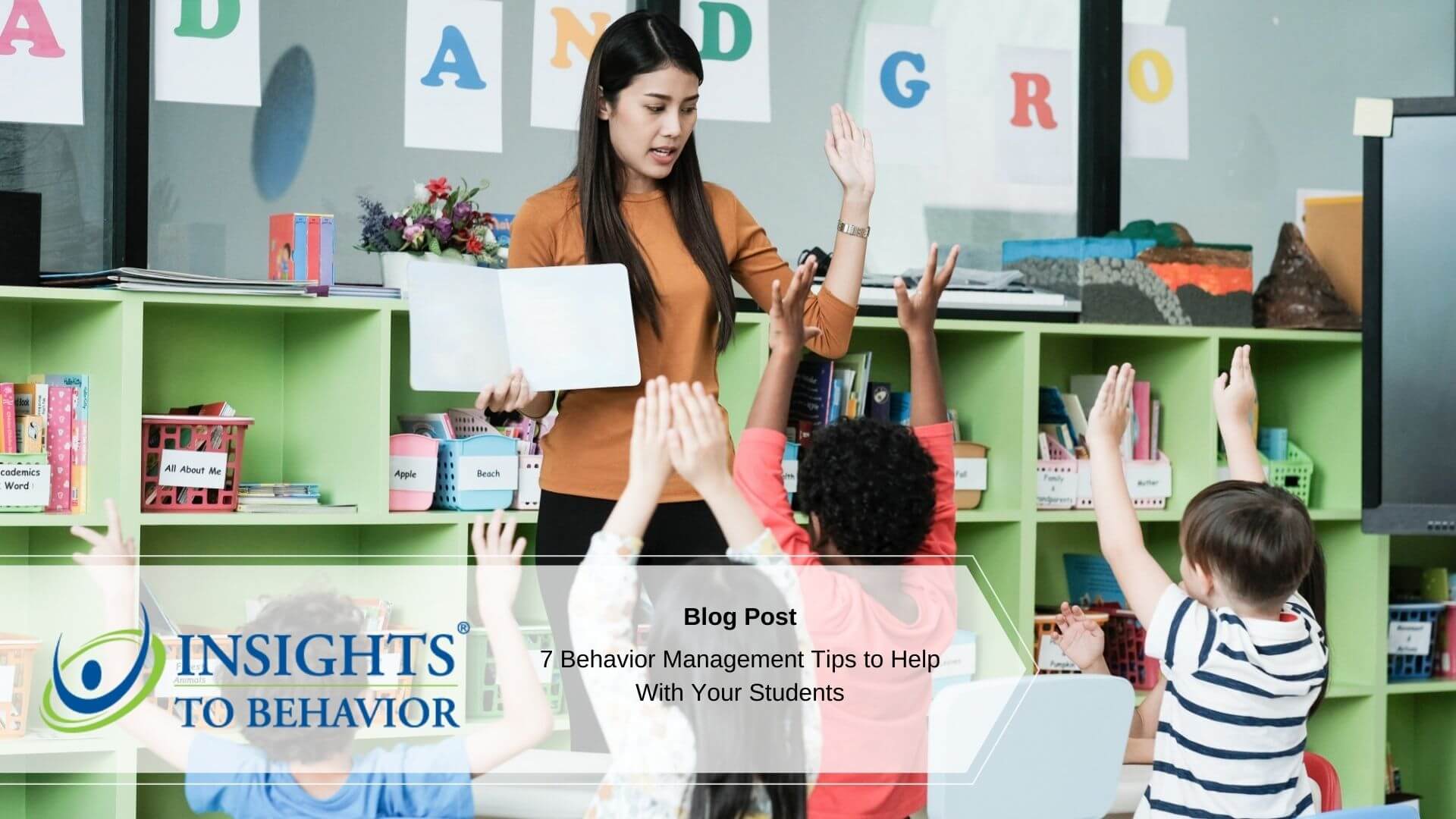According to a University of Pennsylvania study, 44% of teachers were leaving the profession within the first five years. One reason for this burnout was student misbehavior.
Behavioral issues can also take away from lesson effectiveness. Teachers have reported losing over 144 minutes of teaching time each week from behavioral issues.
Therefore, it’s crucial for teachers to learn and use proper behavior management techniques. To help get you started, read on to learn seven behavioral management techniques.
1. Praise
It is necessary to let students know when they’re behaving inappropriately. However, telling them when they’re doing well is also very important.
Multiple studies have noted how the positive reinforcement of praise can benefit both students and educators. This action improves the students’ well-being, success, engagement, and relationship with their teachers.
There are many ways that you can praise your students. You can tell them how well they tackled a problem or assignment in front of their peers. This will not only make a student feel proud but also reinforce proper behavior for other students.
Another way is to call a student’s guardians to praise him or her or send home messages. Along with improving student confidence, the guardians will also appreciate your messages. It may also improve your relationship with them.
2. Non-Verbal Communication
Controlling the words and tone that you use to speak to your students is important. However, non-verbal communication control is also one of the most important behavior management techniques. In fact, excellent non-verbal communication can be more effective than excellent verbal communication.
This review of multiple studies points out some effective non-verbal communication techniques. Keeping your hands out of your pockets, for instance, shows students you’re ready to engage with them. This will make students feel heard and appreciated.
Touching, when used appropriately, is also a great way to keep students engaged. Consider giving students a light pat on their shoulder to bring their attention back to the assignment.
3. Seating Arrangement
This applied behavior analysis (ABA) study proved that when students pick their seating arrangements, they’re more likely to be disruptive in the classroom. It also proved that group seating arrangements are more likely to make students disruptive than individual ones.
Therefore, choosing your students’ seats yourself can improve the overall behavior of the classroom. You might also want to consider shifting your students’ seating arrangement as you learn more about them.
Placing students in seating locations that will improve their individual behavior issues is another good idea. Students that are easily distracted will do better when they’re placed away from the window. Others who struggle to pay attention will perform better in the front of the classroom.
4. Greeting
This study has proven how a teacher greeting students before they enter the classroom can have a positive effect on their behavior. For example, all of the students improved their ability to remain on task during class.
The study above has an excellent suggestion for a student greeting. This includes greeting the student with their name and a compliment or other positive statement as they enter the classroom.
5. Physical Activity
There’s a positive correlation between classroom behavior and the teacher providing students with physical activity breaks between lessons. Both student attention and academic performance were shown to improve.
Researchers used two types of physical activity in these studies. One was pairing the lessons themselves with physical activities. The other was having the students perform light to moderate exercise techniques, such as jumping jacks.
Specifically, you can consider tossing a ball with questions on it around. The question placed wherever a student’s right or left hand lands should be the one that they answer. Another idea is to have students perform a physical exercise while reciting a key point of knowledge.
You can get creative with this one!
6. Precorrection
Precorrection is where the teacher will remind his or her students of the correct way to behave before they behave inappropriately. For instance, before beginning a task, a teacher might remind students that they have to remain quiet and not get up except for special cases (such as sharpening a pencil).
A Portland State University study tested the effectiveness of this method. The researchers in the study found that all teachers who used this behavior management tool saw an increase in correct student behavior.
Therefore, do what you can to reinforce your students’ behavior by reminding them what to do. This doesn’t just have to be before a task. Doing this at the beginning of the class or before students go home (to help them complete homework) are also good reminders.
7. Individual Attention
This one might be difficult to implement, as approaching students individually can take a lot of time. However, research has shown that students who receive individual help from their teachers have fewer issues with anxiety and performed better academically. In addition, a parent who spends time with their child can help improve their overall well-being.
Do what you can with your spare time to offer students that are falling behind individual help. You might also want to recruit the parents to help improve the student’s well-being.
Behavior Management Is Easier Than You Think
You’re likely to feel overwhelmed at first when trying to manage your classroom. However, with perseverance and the careful implementation of many ABA tools and techniques, you will see results.
Besides the tools mentioned above, consider also taking part in our monthly webinars. These give teachers, counselors, psychologists, and many more behavior management tools and behavior management plan examples.
We also offer a software application that creates indefensible behavioral intervention plans for special-education directors. You can sign up for a free demo on this page.
Individual K-12 teachers can benefit as well. We offer behavioral training workshops for individual teachers. You can check these out on this page.






